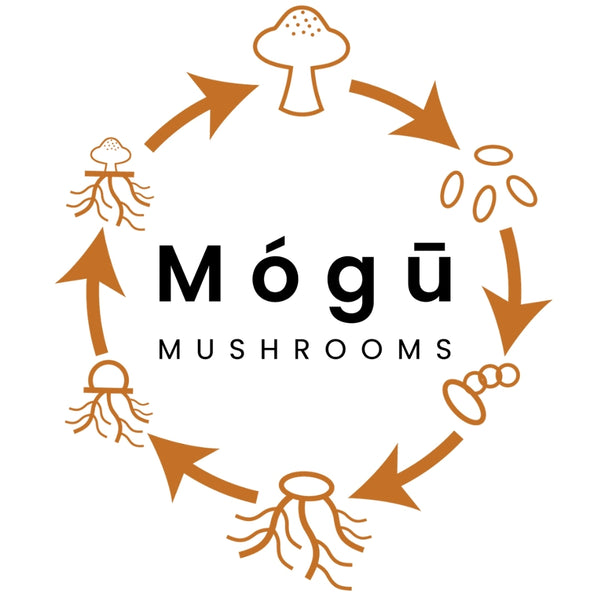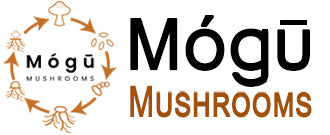Introduction to Medicinal Mushrooms

Humans have consumed mushrooms for as long as we have written records, and most likely well before. Our cultural associations with fungi date back to tribal times, where mushrooms were often considered special and/or sacred. Today, mushrooms remain a complex and mysterious subject.
Each edible mushroom has its own variety of medicinal compounds. More than 10,000 species of mushrooms exist in nature, and there are over 650 different edible mushrooms (mostly in the form of extracts) today, all showing the ability to influence the immune response. Although each mushroom has its own special group of beneficial properties, there is not one specific mushroom considered "better" than the rest, because all mushrooms are magic.
They are all treasured because of their unique structure. Mushrooms in common with other fungi have compounds in their cell walls, containing long chain molecules which have been shown to interact with a number of receptors on the surface of major categories of cells in the immune system of humans and all other animals. Our immune system has the innate ability to recognize the structural components of these mushroom compounds, responding to them with activation and increased effectiveness in terms of the immune response against not only cancerous cells, but also other foreign cells, viral infections, bacterial infections, and parasites.
These compounds from mushroom cell walls help to potentiate our immune system's response to all of these different categories of pathogens and natural threats that we have faced and will continue to face.

|
Nutritional Value of Medicinal Mushrooms
Mushrooms are considered a superfood with high nutritional and functional value, and they are also accepted as nutraceutical foods; they are of considerable interest because of their organoleptic merit, medicinal properties, and economic significance. However, there is not an easy distinction between edible and medical mushrooms because many of the common edible species have therapeutic properties and several used for medical purposes are also edible.
The most cultivated mushroom worldwide is Agaricus bisporus (your white button/portobello mushrooms), followed by Lentinus edodes (Shiitake), Pleurotus ostreatus (Oyster Mushrooms), and Flammulina velutipes (Enokitake). While more and more research is done, mushroom production continuously increases every year, with China being the leading producer around the world. However, many other wild mushrooms are becoming popular for their nutritional, sensory, and especially pharmacological characteristics.
Most mushrooms are composed of around 90% water by weight. The remaining 10% consists of 10–40% protein, 1–8% fat, 3–28% carbohydrate, 3–32% fiber, 8–10% ash, and some vitamins and minerals, with potassium, calcium, phosphorus, magnesium, selenium, iron, zinc, and copper accounting for most of the mineral content.
The nutritional value of edible mushrooms is due to their high protein, fiber, vitamin and mineral contents, and low-fat levels. They are very useful for vegetarian diets because they provide all the essential amino acids for adult requirements and have higher protein content than most animals and vegetables. Besides, edible mushrooms contain many different bioactive compounds with various human health benefits.
Note: Mushrooms are one of the only non-animal sources that produce vitamin D. In order to produce vitamin D, the cultivation area must be exposed to sunlight or ultraviolet light. (Consumers must make sure the mushroom farm in which they are buying their mushrooms from are grown in sunlight or ultraviolet rooms, specifically if they are looking for high Vitamin D content in mushrooms).
Numerous molecules synthesized by macrofungi are known to be bioactive, and these bioactive compounds found in fruit bodies and cultured mycelium are polysaccharides, proteins, fats, minerals, glycosides, alkaloids, volatile oils, terpenoids, tocopherols, phenolics, flavonoids, carotenoids, folates, lectins, enzymes, ascorbic, and organic acids, in general. Polysaccharides, especially β-glucans, have been the most researched and versatile metabolites with a wide spectrum of biological activity.
General Function of Medicinal Mushrooms
More than 130 medicinal functions are produced by mushrooms, with key medicinal uses including: antioxidant, anticancer, antidiabetic, antiallergic, immunomodulating, cardiovascular protector, anticholesterolemic, antiviral, antibacterial, antiparasitic, antifungal, detoxification, hepatoprotective effects and protecting against tumor development and inflammatory processes.
In addition, the expanded knowledge of the molecular basis of tumorigenesis and metastasis (the spread of cancer cells to new areas of the body) has given the opportunity for discovering new alternative drugs against abnormal molecular and biochemical signals leading to cancer. In the last decade, the interest for pharmaceutical potential of mushrooms has been increased rapidly, acknowledging mushrooms as mini-pharmaceutical factories producing compounds with miraculous biological properties.
*All bioactive compounds and medicinal functions mentioned above are discussed in more detail in the unique pages of each medicinal mushroom species, including supported research analysis from clinical studies, International Journals of Medicine, and International Journal of Medicinal Mushrooms.
Proven Effects in Adding Mushrooms to your Diet: Promising Clinical Studies
More than 600 studies have been conducted worldwide, and numerous human clinical trials on medicinal mushrooms have been published. Several of the mushroom compounds have proceeded through phase I, II, and III clinical studies and are used extensively and successfully in Asia to treat various cancers and other diseases. There is clearly a strong scientific correlation that humans who eat mushrooms more often reduce the risk of diseases. Below are some examples of many:
Clinical Study: In a 15 year study (from 1972-1986) of 174,505 inhabitants of the Nagano area of Japan, mushroom farmers were found to have a much lower rate of death from cancer than the general population. At the time of research, the average cancer death rate in Nagano was 160 per 100,000. This rate dropped to 97 per 100,000, comparatively, in families of enoki mushroom growers. Men's cancer deaths decreased by 36.6 percent, and women in this cluster benefited from a 42.7 percent decrease in mortality from cancer (Ikekawa et al, 1989, 2003). According to the National Cancer Institute, by contrast, the cancer death rate in the United States is 196.8 per 100,000 men and 139.6 per 100,000 women (based on 2011–2015 deaths). (1)(2)
Clinical Study: In the early 1980s, Taguchi et al. tested lentinan, a beta glucan from Shiitake, on phase III stomach cancer (advanced or recurrent) in 275 patients. Lentinan was used in combination with cytostatic chemotherapy. The study proved that adding lentinan safely: prolongs life, reduces cancer treatment side effects, and improves the patient’s immune response to cancer.
Clinical Study: In another clinical study, Kasamatsu et al. tested PSK, from Trametes versicolor (Turkey tail mushroom), on phase III cervical cancer. They have found that PSK greatly prolongs life in combination with radiotherapy and makes cancer cells more sensitive to radiation. 5-year survival rates differed drastically: 48% (without PSK) vs. 79% (with PSK).
Clinical Study: Published in 1990, a clinical trial by Mitomi et al. on 462 patients showed that PSK, in combination with a cytostatic (type of chemotherapy drug), improves disease-free survival in resected bowel cancer (colorectal cancer; cancer of colon and/or rectum), when compared to using chemotherapy alone.
Clinical Study: In China, Q. Y. Yang et al. carried out a study on 485 patients with esophageal, stomach and lung cancer, establishing that PSP: alleviates the side effects of standard cancer therapy, increases recovery and survival rate, inhibits cancer by activating T-lymphocytes, NK cells and complement C3.
Clinical Study: Dr. Ivan Jakopovich, leading expert and a recognized authority for medicinal mushrooms in Europe, completed 3 cohort studies: on 65 lung cancer, 51 bowel (colorectal) cancer and 105 breast cancer patients. Cohort studies are longer-term observational studies that compare treated group to the control group, which is outside the control of the investigator. The study concludes that the patients with lung cancer, bowel (colorectal), and breast cancer using mushroom extract blends showed: improved survival and health status (esp. in advanced recurrent and metastatic tumor disease), lessened side effects of standard cancer therapy, and improved quality of life compared to patients who only received standard cancer therapy. This detailed study used large doses (5g or more per day) for a period of 3 months.
That ability of mushrooms to confer longevity, to enhance our health and well being is very much present in these large scale population studies. The studies done do not reflect just one mushroom, it is important to understand that eating mushrooms in general has the ability to support the immune system.
Very few clinical trials have yet been carried out in the Western hemisphere, mostly due to lack of tradition, higher costs and overly restrictive health authorities. Almost all clinical trials have been carried out in the East, especially in China and Japan, where medicinal mushrooms have been cultivated and widely consumed for thousands of years.
For this reason, Mógū is focused on passing this ancient knowledge gathered by our Eastern friends to the people of the West, to raise awareness of the benefits provided by the Fungi Kingdom in order to include a variety of mushrooms in your diet.




References:
1. Ikekawa, T., 1985. "Proflamin, a brand new antitumor agent: preparation, physicochemical properties and antitumor activity." Western Journal of Cancer Research 76: 142-148. Ikekawa, T., et. al., eds. 1989.
2. Ikekawa, T., 2001. "Beneficial effects of medical and edible mushrooms on health care." International Journal of Medicinal Mushrooms 3: 291-298. Ikekawa T. 2003.

